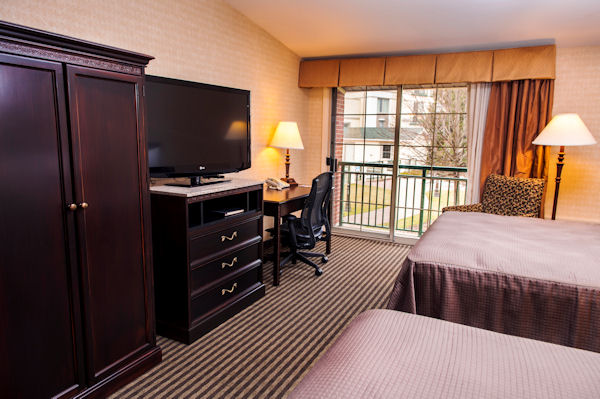
By Mario Insenga
While a positive customer experience is the ultimate goal for any hotel, particularly during renovations, reaching such a goal takes time, effort and – as commonly believed – large sums of money. But as hotel guest satisfaction rates reach their highest levels in seven years, hoteliers must continue the push of securing return customers and improving room occupancy.
Now, cost-effective best-practice solutions are proving their place in the hotel renovation market, as hoteliers continue to invest in more affordable, greener restoration options. One of the more popular solutions in the hospitality industry has been the uptick in furniture asset management during guest room revamp projects, such as furniture refinishing, remanufacturing and re-upholstery.
With services and solutions readily available, with benefits that include decreased budgets and carbon emissions, hotel owners must rethink renovations, and realize that restoration doesn’t always have to come with such burden.
Battling back against budget cuts
Even as occupancy rates return to pre-recession levels, hotels and resorts across the country are continuing to face restricted project budgets and limited time-frames for completion. When working within such budgets, hotels are often confronted with the dilemma of having to decrease – or worse, completely turn down – the scope of an original renovation plan, in order to allocate necessary funds.
Cost-efficient furniture asset management is the driving force behind the widespread do-more-with-less initiative sweeping the industry nationwide. By refinishing and re-upholstering the furniture in a guest room, and avoiding buying brand new assets, hoteliers can save up to 80 percent in total expenditure. As a result, the monetary savings can then be applied elsewhere or re-invested, like renovating or updating other portions of the establishment.
Increasing sustainable initiatives
In order to satisfy guests, hoteliers must evaluate more than just the cost of a reservation. While all travelers like to get the best bang for their buck, they are also taking into consideration the environmentally friendly initiatives implemented in each establishment.
According to a recent survey from TripAdvisor.com, analyzed responses from 1,300 U.S. travelers revealed that nearly two thirds of travelers almost always consider the environment when planning their vacations, such as the amount of recycling amenities made readily available on-site.
It’s now easier than ever for consumers to research a hotel’s sustainability rating before booking their stay. Earlier in April, TripAdvisor, a top travel site, teamed up with Energy Star, the U.S. Green Building Council and the United Nations Environment Programme to create a new environmental rating service, Green Leaders. With TripAdvisor’s Green Leaders, sustainability rankings are displayed right alongside hotel affordability, customer service and other critical factors to consider before confirming a reservation.
Along with more common green initiatives like recycling, linen reuse programs and electronic receipts, upcycling guest room, lounge or dining-area furniture, allows hoteliers to avoid sending waste to the nation’s crowded landfills, and help lower the rate of deforestation. Perhaps more importantly, a hotel or resort can lower its total carbon footprint for a large-scale furniture renovation project by up to 90 percent – reducing the amount of hazardous carbon emissions and creating a safer, more sustainable living and working environment.
Real-life renovations: BEST WESTERN PLUS The Inn at King of Prussia
An establishment that has recently demonstrated such fiscal and environmental improvement through the use of furniture asset management services is BEST WESTERN PLUS The Inn at King of Prussia, a 168-room property owned and operated by RWK Enterprises.
As a hotel serving primarily repeat business travelers, the King of Prussia knew it had to replace its aging box television sets for sleeker, larger LCD TVs when guests frequently shared the value the update would bring to the property. But in order to maintain a cohesive design scheme, the Pennsylvanian inn also knew it would have to do more than just update its armoires. Instead of purchasing all new furniture pieces for each of its guest rooms, the Inn at King of Prussia decided to restore the well-built, locally made furniture assets it already owned.
The property chose the more cost-efficient, sustainable option, and invested in furniture asset management solutions to remanufacture its existing pieces. The solutions included color changes, hardware updates and new upholstery to create a contemporary, modern look for a faction of the price of buying new. Once complete, the project delivered like-new headboards, nightstands, side chairs, benches, desks, micro-fridge cabinets and modified armoires in 100 rooms throughout the establishment.
Along with a new contemporary look that received positive reviews for months after renovations were complete, the hotel also experienced significant cost savings and a reduced carbon footprint. In total, BEST WESTERN PLUS The Inn at King of Prussia reduced its total expenditure by an estimated 75.8 percent and minimized its carbon emissions (in tons) from 125.32 to a mere 1.24.
A rise in rethinking renovations
As hotels begin driving higher occupancy rates and increasing revenue per room, it’s critical to ensure guests experience a positive stay. While project budgets may be limited, it is still possible to renovate furniture – to create an overall luxurious look in any type of room. And it can happen at a low cost, all while meeting rigorous brand standards and upholding green initiatives.
Hoteliers must evaluate the prospective restoration project at hand before any costly decisions are made, and consider the different emerging solutions, like furniture asset management, that have proven successful for over three decades. An improved, sustainable establishment is now more attainable than ever before; the first step to doing so is rethinking renovations.


